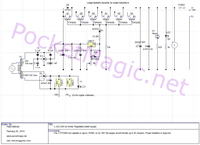asking
Full Member level 5

- Joined
- Sep 21, 2010
- Messages
- 279
- Helped
- 6
- Reputation
- 12
- Reaction score
- 6
- Trophy points
- 1,298
- Activity points
- 3,377
Hello,
I have been trying to find how to find the circuit is having common collector circuit or common emitter or common base ? please gimme some hints...that would be helpful.... i know little that the thing which is common to both input and output is common (E,B or C) configuration. Please help me to find the configuration in the below circuit....

I have been trying to find how to find the circuit is having common collector circuit or common emitter or common base ? please gimme some hints...that would be helpful.... i know little that the thing which is common to both input and output is common (E,B or C) configuration. Please help me to find the configuration in the below circuit....


